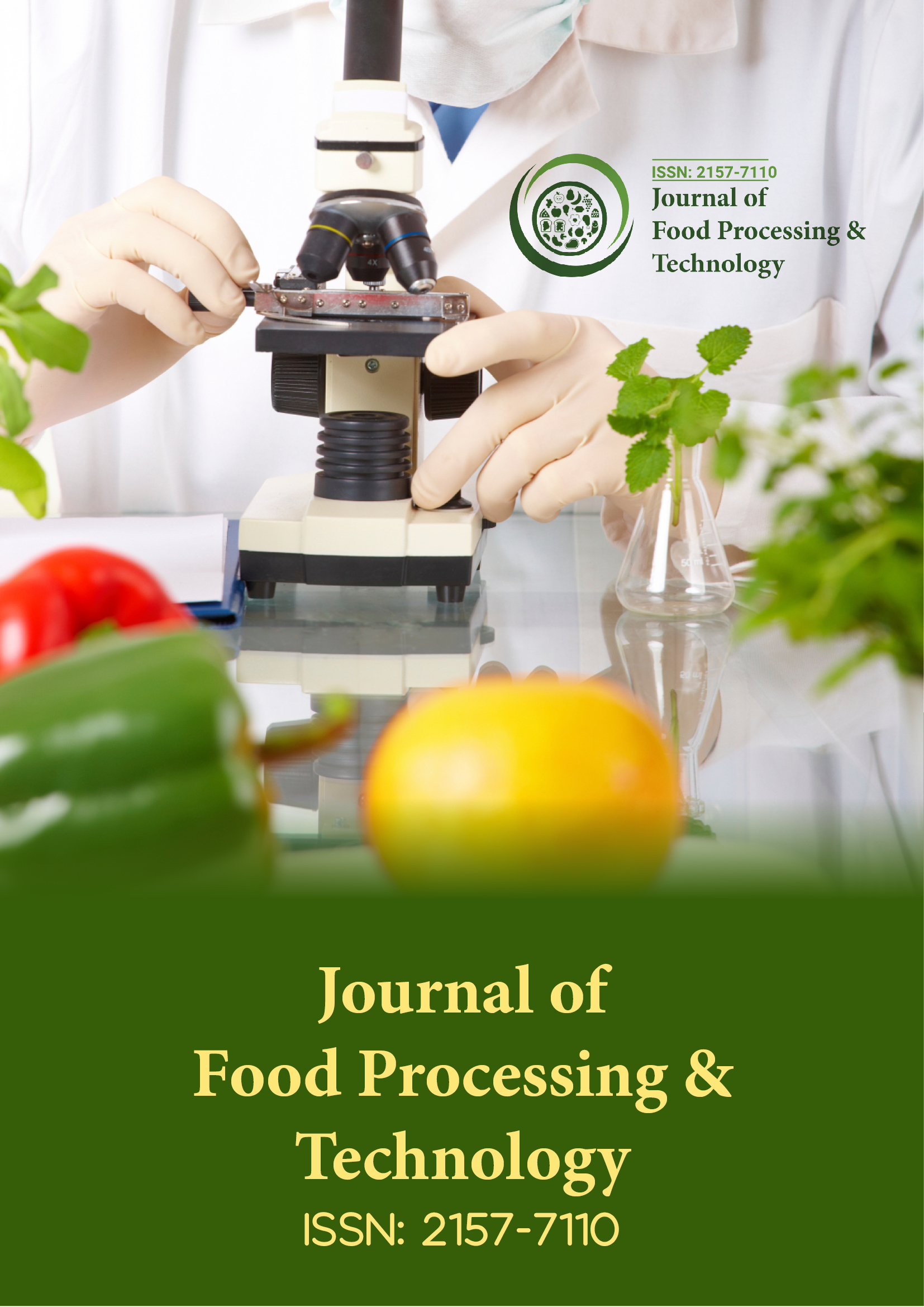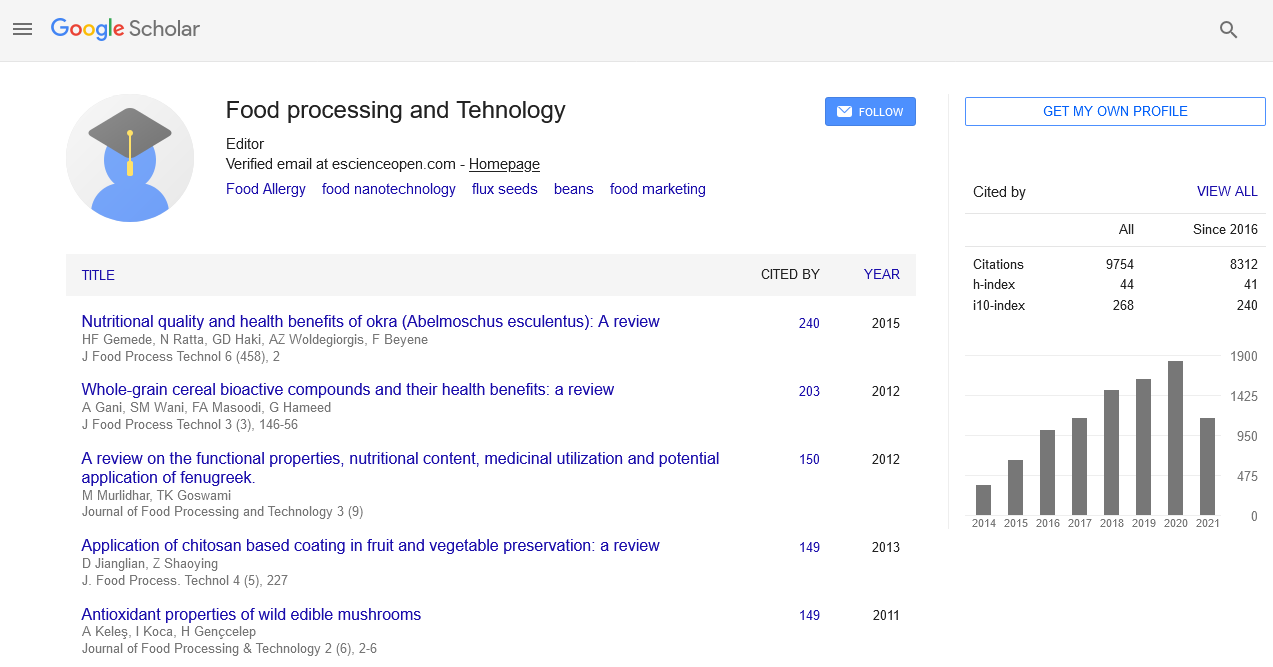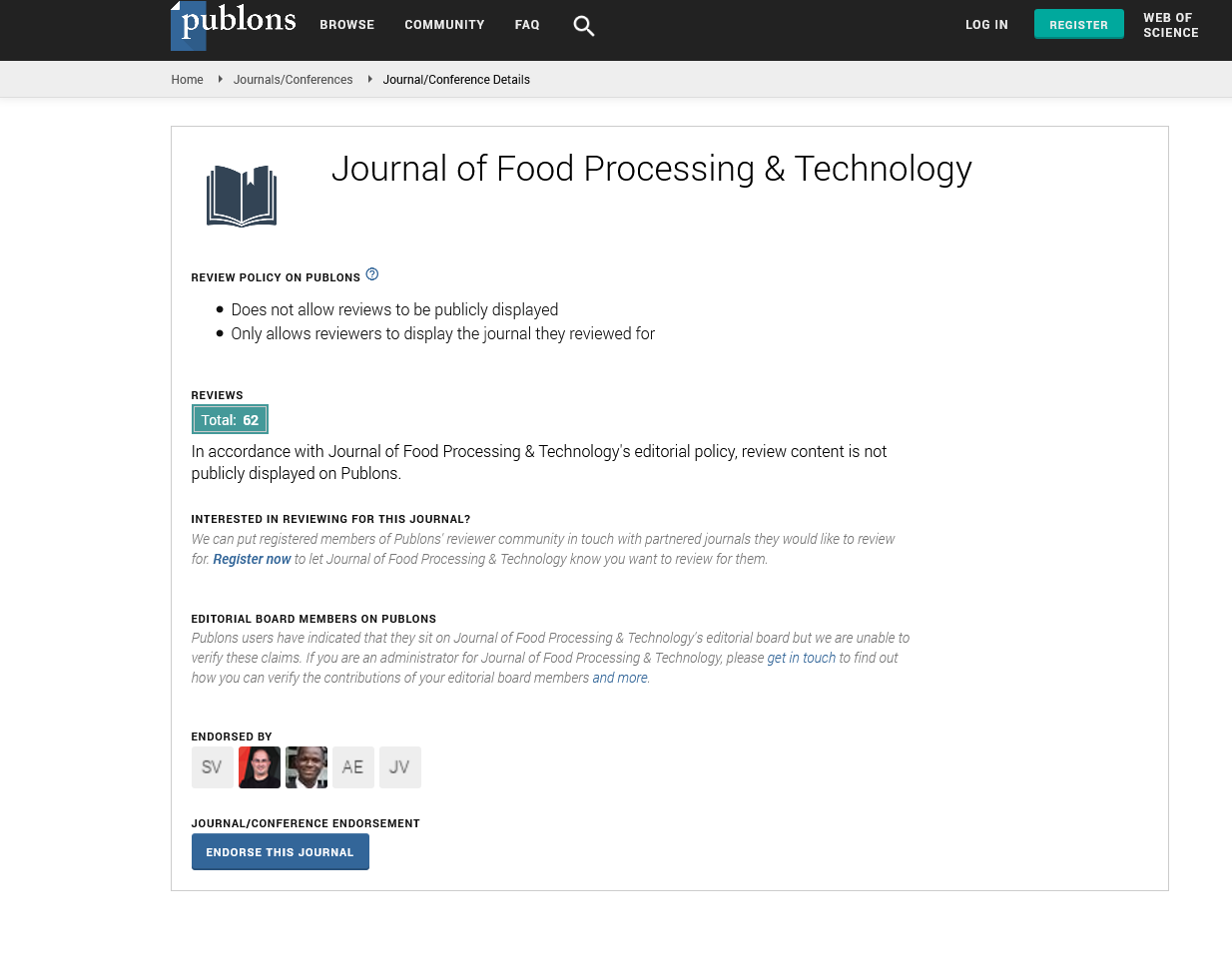Indexed In
- Genamics JournalSeek
- Academic Keys
- JournalTOCs
- China National Knowledge Infrastructure (CNKI)
- Access to Global Online Research in Agriculture (AGORA)
- Centre for Agriculture and Biosciences International (CABI)
- RefSeek
- Directory of Research Journal Indexing (DRJI)
- Hamdard University
- EBSCO A-Z
- OCLC- WorldCat
- Scholarsteer
- SWB online catalog
- Publons
- Euro Pub
- Google Scholar
Useful Links
Share This Page
Journal Flyer

Open Access Journals
- Agri and Aquaculture
- Biochemistry
- Bioinformatics & Systems Biology
- Business & Management
- Chemistry
- Clinical Sciences
- Engineering
- Food & Nutrition
- General Science
- Genetics & Molecular Biology
- Immunology & Microbiology
- Medical Sciences
- Neuroscience & Psychology
- Nursing & Health Care
- Pharmaceutical Sciences
Sensing fifty shades of spice fraud
8th International Conference on Food Safety, Quality & Policy
November 27-28, 2017 Dubai, UAE
Saskia van Ruth
Wageningen University and Research Centre, Netherlands
Keynote: J Food Process Technol
Abstract:
Spices are high on the list of fraud reports world-wide. Various kinds of
adulterations have surfaced: adulterations with foreign material, e.g. starch,
look-a-likes, brick powder, sawdust, etc. On the other hand, we also come across
adulterations with low grade own material, e.g., leaves and branches, extracted
material, peel, pulp, etc. This kind of adulterations is usually analytically far
more challenging. Some international standards focus on key compounds or
characteristics. There are some available for black pepper and saffron for instance.
However, because there are so many shades of fraud, adding method to method
will make the analytical checks much costly. Therefore, we developed broad
anomaly methods, which discriminate the good from the bad guys based on
analytical fingerprints. Large sets of various grades of black/white pepper, paprika powder, nutmeg and saffron were collected.
They were analyzed by Proton Transfer Reaction Mass Spectrometry, a very rapid and non-destructive analytical technique. The
analyses resulted in defined analytical signatures of the various spices. Using multivariate statistics, the signatures of normal,
genuine products and their natural variation were separated from adulterated materials. The methods were subsequently
successfully validated with a new set of samples and tested in practice on industry and retail samples. The methods reveal that
for some spices, 20-30% of those on the market are adulterated and indeed these adulterations come in many shades of grey.
Recent Publications
1. Erasmus S W, Muller M, Alewijn M, Koot A H, van Ruth S M, Hoffman L C (2017) Proton-transfer reaction mass spectrometry
(PTR-MS) for the authentication of regionally unique South African lamb. Food Chemistry; 233: 331-342.
2. Alewijn M, van der Voet H and van Ruth S M (2017) New approach for the validation of multivariate classification methods
for product authentication by analytical fingerprints â?? concept and case study on organic feed. Journal of Food Composition
and Analysis; 51: 15-23.
Biography :
Saskia van Ruth heads the research group on Food Authenticity and Nutrients at Wageningen University and Research Centre, Netherlands. She is also a Professor of Food Authenticity and Integrity both in Wageningen and in University College Cork, Ireland. She received her PhD in Food Chemistry from the Wageningen University and worked for Industry and in the academic world since. Her present research deals with fraud risks, i.e. factors impacting on the risk of food fraud in supply chain networks. Furthermore, she is active in research on novel methodology for fraud detection, both in and beyond the laboratory. She has published more than 250 scientific papers.


